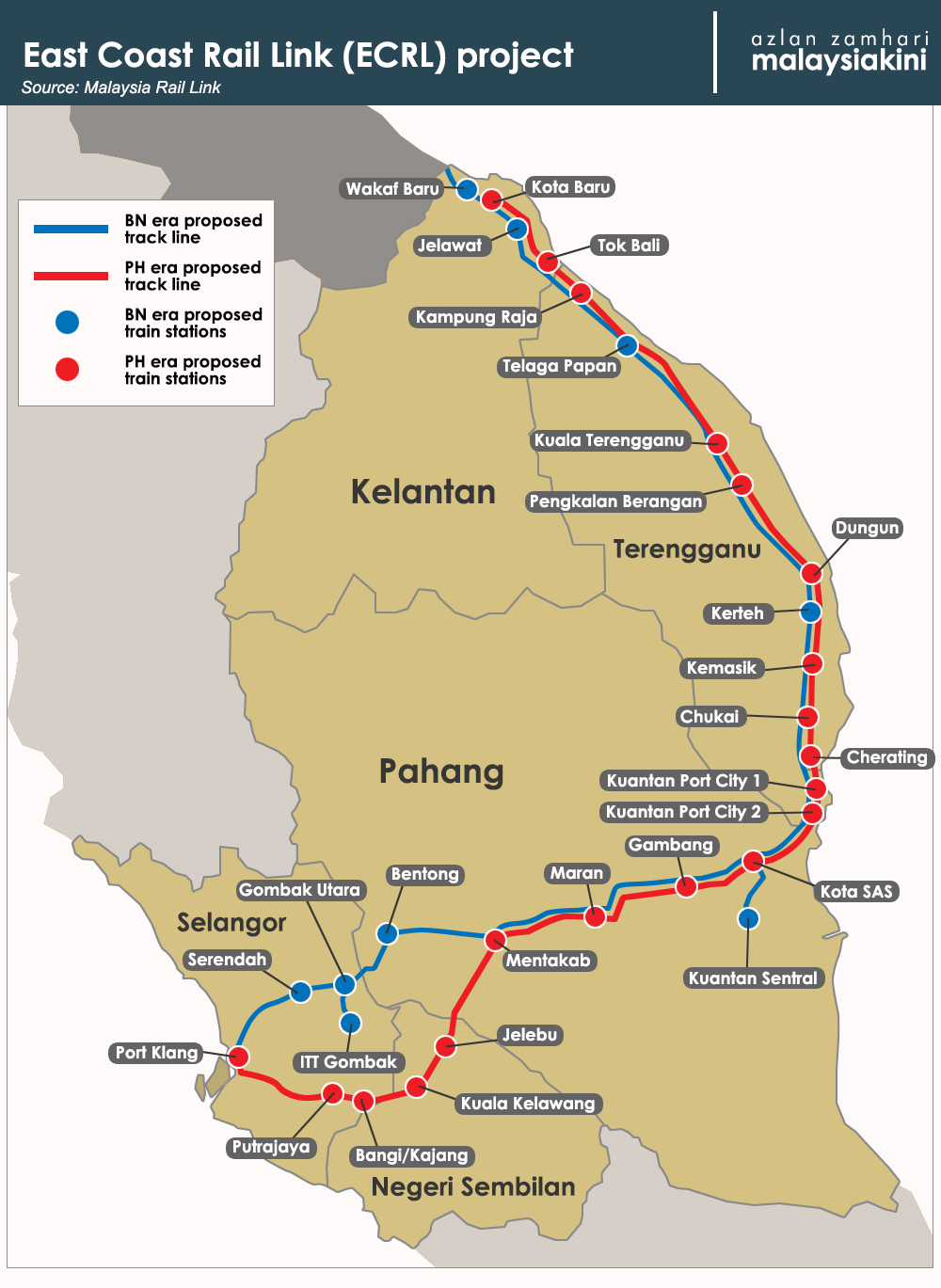Clearly, the Covid-19 outbreak has substantially impacted various industries in the country, not least mega-railway projects like the East Coast Rail Link (ECRL) and Mass Rapid Transit (MRT) which nevertheless seem to be on track albeit slowly.
Although Malaysia’s economy was momentarily thrown into confusion by the pandemic, the good news is that infrastructure project implementation continues to move ahead towards completion with consistent support from the federal government.
Prime Minister Muhyiddin Yassin did pledge to continue all projects under the 2020 Budget, including the ECRL and Mass Rapid Transit 2 (MRT2) when he introduced the Prihatin Rakyat Economic Stimulus Package (Prihatin) on March 27.
On the ECRL, considered an economic game-changer for the people in the peninsula’s East Coast, Malaysia Rail Link (MRL) chief executive officer Darwis Abdul Razak expressed confidence that the 640km track would see completion as scheduled.
“This is because the overall project is slightly ahead of schedule driven by rapid construction works for ECRL’s alignment in section A (Kota Bharu - Dungun) and section B (Dungun - Mentakab),” he told Bernama recently.
According to him, the project has registered an overall progress rate of 18.10 percent to-date as compared to 16.86 percent in June.
On top of that, the project was only 0.02 percent delayed in its implementation schedule during the period of the movement control order imposed on March 18, he said.
Currently, he said, the construction primarily involved earthworks, tunnel excavation, bridge works, foundation works and a prefabricated vertical drain.
“The number of priority locations for construction in both section A and B is expected to increase to 101 spots by year-end as compared to 27 spots a year ago,” he added.
MRL is also banking on the recent recruitment of locals from the East Coast states of Kelantan, Terengganu and Pahang into the ECRL Industrial Skills Training Programme, for potential employment in the rail construction sector, to expedite the development.
Darwis said MRL intends for 70 percent of its ECRL workforce of 23,000 to comprise Malaysians.
As such, MRL highly anticipates that Budget 2021 will provide incentives to spur the construction works as well as to support the hiring of local manpower.
In this regard, Darwis said MRL welcomes both fiscal and non-fiscal incentives from the federal government.
The ECRL project, expected to be fully completed by December 2026, is divided into three sections, namely Section A (Kota Bharu-Dungun), Section B (Dungun-Mentakab), and Section C (Mentakab-Port Klang).
As for Section C, the government had assured that it was renegotiating with the Chinese government and main contractor of the project for finalisation on the alignment costs and project implementation schedule.
Meanwhile, Thought Partners Group Consulting (TPG) founder and group managing partner Abi Sofian Abdul Hamid said just as ECRL is moving ahead albeit at a slower rate, the Light Rail Transit 3 (LRT3) project was also making progress.
He said LRT3 is due for full completion in February 2024, with 33.12 percent accomplished thus far.
Once completed, the project stretching 37.8km, will connect the Western Corridor of Klang Valley and Kuala Lumpur.
As for MRT projects, the developer told Bernama that the progress of the Putrajaya Line as of August 2020 was at 79.2 percent.
MRT Corporation Sdn Bhd (MRT Corp) SSP Line project director Amiruddin Ma'aris in a recent news report said phase one involving Kwasa Damansara and Kampung Batu MRT stations should be able to begin operating by the middle of 2021, and the rest of the line by 2022.
The MRT Putrajaya Line is the second line under the Klang Valley MRT project. It will have 36 stations, of which nine are underground. The entire alignment is 56.2km, from Kwasa Damansara to Putrajaya Sentral.
- Bernama





No comments:
Post a Comment
Note: Only a member of this blog may post a comment.